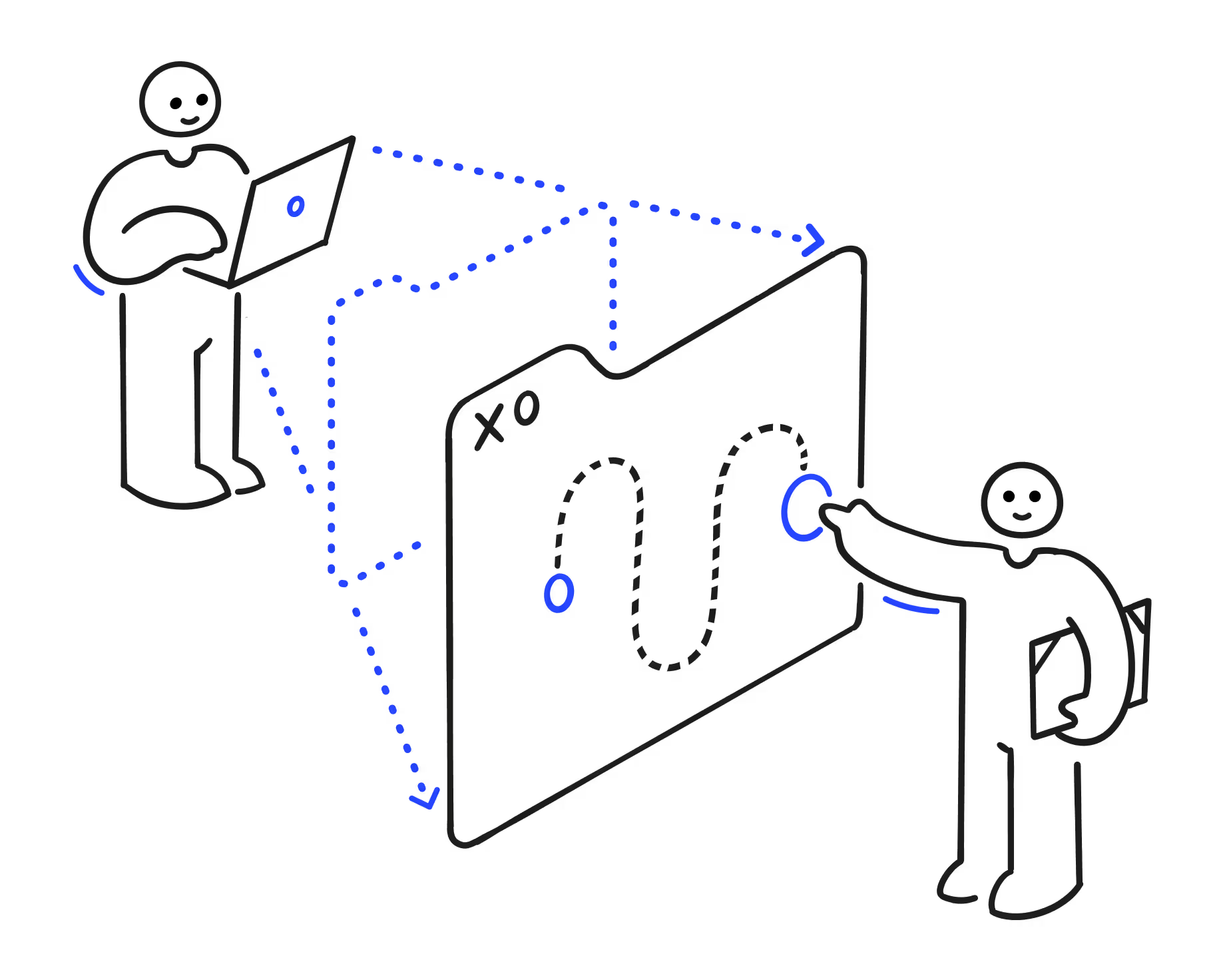9 time management strategies for busy managers

Discover Workleap Officevibe's benchmark report on 12 key employee engagement metrics

Managers face a constant stream of decisions, meetings, and team needs. With limited hours in the day, important work often gets buried under urgent requests. If you don’t have a clear system for protecting your focus, it’s easy to feel like you’re always playing catch-up.
Good time management strategies for managers help you boost productivity, prioritize tasks, and regain control of your time. In this guide, we’ll share practical steps leaders can take to make space for the tasks that matter most.
What’s time management?
Managing time effectively helps managers stay focused and in control. It allows you to prioritize work, respond with intention, and lead your team without constant disruption.
Good time management leads to:
- Fewer chaotic, high-stress workdays
- Better separation between work and personal time
- Stronger focus during deep work
- Sustainable output without burnout
- Fewer interruptions throughout the day
- A noticeable boost in energy and motivation
This is where a solid time management process makes a real impact. When you know how to set clear expectations, align tasks to goals, and reduce administrative friction, it’s easier to stay in control of your day (and your attention).
Common time management challenges
Even experienced managers run into scheduling hurdles now and then. Here are some of the most common blockers, plus quick tips for lightening the load.
Poor planning
Without a clear plan, your day can quickly fill with low-priority tasks, like tracking down feedback or responding to non-urgent pings. That constant reactivity doesn’t just affect your own priorities. It cuts into team time, too. Setting daily, weekly, and monthly goals helps you stay focused and avoid constant reactivity. And tools like Workleap’s one-on-one meeting template keep team check-ins aligned with higher-impact work.
Lack of organization
When you don’t consistently manage schedules, notes, and follow-ups, things fall through the cracks. Strengthening your schedule management skills and using tools to automate reminders makes it easier to stay on top of tasks and have confidence in your follow-through.
Feeling overwhelmed
Managers constantly juggle competing demands, from urgent team requests to shifting priorities from leadership. That constant context switching makes it hard to know where to start. Taking time to prioritize just one or two key actions will reduce overwhelm and allow you to move forward with clarity.
Procrastination
You might be tempted to avoid work that feels complex, time-consuming, or uncomfortable. But the longer tasks linger, the harder they are to start. Scheduling time to make progress on the things you’ve been putting off will reduce some of the pressure.
Distractions
It’s easy for notifications, emails, and quick-fire questions from the team to derail deep work. To preserve momentum, try closing unnecessary tabs, setting a timer, and changing your Slack or Teams status to show you’re in focus mode.
Difficulty saying no
Without clear priorities, you may wind up saying yes to everything, which spreads your focus too thin. Clarifying goals with your team in regular one-on-one meetings helps you assess which requests align with your priorities. It also gives you justification for saying no when they don’t.
Lack of self-discipline
Following through on your own plans isn’t always easy. Without structure, it’s tempting to push aside focused work or skip planning altogether. Building a routine that includes time to plan, focus, and reflect reinforces consistency and sets a strong example for your team.
9 time management tips and strategies that actually work
For managers, time management starts with small, intentional habits. The strategies below highlight practical skills you can build over time to better manage your workload while supporting your team. Each reflects real-world examples of good time management skills that help managers lead with confidence and clarity.
1. Make a plan and set priorities
Start each day with a short list of must-do tasks. Think about what’s most valuable or urgent, then rank your time accordingly. Aligning your own priorities with team goals keeps everyone working toward shared outcomes.
2. Start early
Starting your day with 30 minutes of planning or quiet focus sets a positive tone for the rest of your workday. This habit makes it easier to think clearly and tackle strategic decisions before the messages and meeting requests start rolling in.
3. Practice decision-making
Delaying decisions stalls progress and causes tasks to pile up. Trust your judgment, and use data and team input to guide next steps. Workleap Officevibe’s survey tools surface insights in real time, helping you make informed choices without overthinking.
4. Delegate tasks
Being an effective time manager doesn’t mean doing everything yourself. Handing off work to team members builds trust and allows you to focus on priorities only you can manage. Delegation also supports the time management of employees by empowering them to take ownership of tasks.
5. Manage time-wasters
Identify what’s eating into your schedule, whether it’s unnecessary meetings, status updates that drag on, or repetitive admin work. One helpful tool for managers is Workleap Performance. It uses AI to streamline performance tasks like reviews and follow-ups, giving you back time for more strategic work.
6. Deal with stress wisely
Managing a team can be demanding, but stress will build up if you try to do too much at once. Regular breaks, focused check-ins, and clear planning will reduce your mental load and allow you to work at a more sustainable pace.
7. Avoid multitasking
Juggling multiple tasks at once often leads to slower progress and more mistakes. Instead, block time on your calendar to focus on one type of work at a time, like deep thinking, team support, or admin work. Grouping similar tasks will allow you to move through them more efficiently.
8. Stop procrastinating
Sometimes, starting a task is the hardest part. One smart tactic is the Pomodoro Technique: Set a timer for 25 minutes, focus on one task, then take a short break. This can lower the pressure to be “productive” and help you build momentum with less mental friction.
9. Use a planning tool
Digital planning tools like Trello, Asana, or even your calendar turn to-do lists into shared, trackable workflows. They make priorities visible, deadlines clear, and collaboration smoother, keeping the work moving forward and the team on the same page.
Time management techniques for managers
We mentioned the Pomodoro Technique, but it’s far from the only option. Different approaches work for different people, so try these time-tested methods to manage your time more effectively:
- Pomodoro Technique: Work in 25-minute intervals, followed by short breaks to keep your brain fresh and focused. Pomodoro is especially useful for tasks that require higher concentration.
- Eisenhower Matrix: Prioritize by urgency and importance: Do, Decide, Delegate, or Delete. This framework lets you act intentionally instead of reacting to every request that pops up.
- Rapid Planning Method (RPM): Start with outcomes, not tasks. Ask: What do I want? Why does it matter? How will I get there? This method shifts your focus from busywork to meaningful results.
- Pareto Analysis (the 80/20 Rule): Focus on the 20% of tasks that drive 80% of your results. It’s a great filter for spotting high-impact work and trimming time-wasters.
- SMART goal system: Make goals specific, measurable, achievable, relevant, and time-bound (aka S-M-A-R-T). It’s a simple goal-setting framework that keeps progress visible and actionable.
Tools and technology for time management
The right tools make it easier to plan your day, stay focused, and follow through on high-impact tasks. Here are a few that support different parts of your workflow:
- Workleap for people-first talent management: From AI-powered engagement summaries to goal tracking and real-time feedback, Workleap gives managers the tools to stay focused, motivate their teams, and spend less time on administrative busywork.
- Time Doctor for time tracking: Understanding where your time goes will help you spot inefficiencies and refocus your energy on work that drives results.
- Calendar for scheduling: Use your digital calendar to plan meetings, block out time for deep work, and manage availability. Many platforms even allow you to set limits on meeting hours to protect your focus time.
- Trello for task and project management: Trello’s flexible boards let you organize personal to-dos or team projects, delegate tasks, and track progress all in one place.
- Evernote for note-taking: Keep meeting notes, reminders, and ideas organized in a central, searchable hub that’s easy to access when you need it.
- Momentum Dash for focus and inspiration: This extension replaces your browser’s default home screen with a calming photo, a daily focus prompt, and a running task list. It’s a helpful way to start each browsing session with intention.
- ProofHub for project management and team collaboration: Combine team communication, project planning, and task tracking to keep everyone aligned while cutting down on endless status updates.
Lead with clarity — without burning out
Effective time management relies on more than just good habits. The right tools make it possible for managers to stay focused, support their teams, and reduce the friction of day-to-day work.
Workleap Performance simplifies the work behind managing people, with customizable review cycles, automated reminders, 360-degree feedback, and AI-powered summaries. Everything is built to drive clarity and free up time to focus on what matters: managing performance and leading your team.
Try Workleap Performance for free and see how much time you can get back.
Give HR and managers the clarity, confidence, and connection to lead better every day.


%20(1).avif)


.avif)
.avif)








